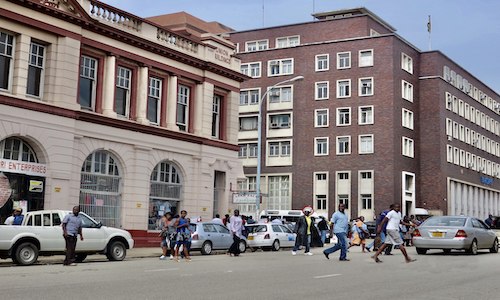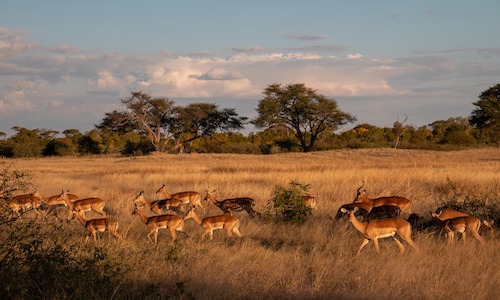8 June 2022
Zimbabwe has a competitive advantage on the leather value chain given its viable livestock base and wild game, but had lost the grip in recent years, as established manufacturing companies collapsed in the face of a myriad of and political reasons. For instance, leather shoe production has plummeted to 1.5 million pairs per year from a peak of 17 million in the 90s. To revive the leather sector, the government last year launched the Zimbabwe Leather Sector Strategy (2021-2030) to increase investment in the sector and maximize added value.

Enthusiastic Zambezi Tanners’ Manager Arnold Britten, eagerly explains the situation of Zimbabwe’s leather industry to curious visitors and journalists visiting the Zimbabwe pavilion at APLF Dubai last April. A former IT technician, Britten was always fascinated by leather. With steadfast determination, he decided twenty years ago to learn the art and craft of leather making and over the years became one of the industry’s most seasoned experts.
The five companies participating in APLF Dubai were brought by Zimtrade, an export facilitator. “Our objective is to get exposure, to learn and to interact and ultimately to bring Zimbabwe back on the map”, explains Britten.
By the 1990s, the country had one of the most sophisticated leather industries in Africa but over the past decades it lost its glory due to the impact of Zimbabwe’s economic challenges and to the economic sanctions imposed on the country by the West in the early 2000s.
But the current government is re-engaging itself in the leather industry and last year, it officially launched the Zimbabwe Leather Sector Strategy (2021-2030), encouraging the sector to increase volumes and products and to contribute to the economic rebound. In addition to increased investment in the sector, the strategy focuses on improving education and training and transferring generational knowledge leather making. Given the country’s abundance of quality natural hides as well as highly skilled manpower, the strategy is bound to be a success and to help Zimbabwe reclaim its dominant position in the leather industry regionally.

Another turning point in revitalizing the value chain was the establishment of the Tanners, Footwear and Leather Manufacturers Association of Zimbabwe (TAFLAZ) in 2019, followed by the launch of the Zimbabwe Leather Collective (ZLC), a cluster comprising at the moment six major contributors. “The collective approach contributes to alleviate operational costs and logistical challenges of product marketing which were tough for most players at individual level”, explains Britten, who is one of the pioneers of the initiative.
Exotic leather is one of the features that set Zimbabwe’s leather industry apart and was largely featured at APLF. Some of the exotic leathers include crocodile, elephant, ostrich, zebra, wildebeest, springbok, buffalo, and impala, among others.

These leather products made from game are obtained through a partnership with the Zimbabwe National Parks and Wildlife Authority, are produced by fully licensed tanners and answers to CITES standards, according to Britten. “Preserving the diversity and the abundance of the country’s wild game is essential and we make sure that all the production is legal,” assures Britten.
Today, most of Zimbabwe’s leather exports are to the US and Europe but it is expected that increased production will enable the country to spread its exports to new foreign markets including China.
We bring leather, material and fashion businesses together: an opportunity to meet and greet face to face. We bring them from all parts of the world so that they can find fresh partners, discover new customers or suppliers and keep ahead of industry developments.
We organise a number of trade exhibitions which focus on fashion and lifestyle: sectors that are constantly in flux, so visitors and exhibitors alike need to be constantly aware both of the changes around them and those forecast for coming seasons.